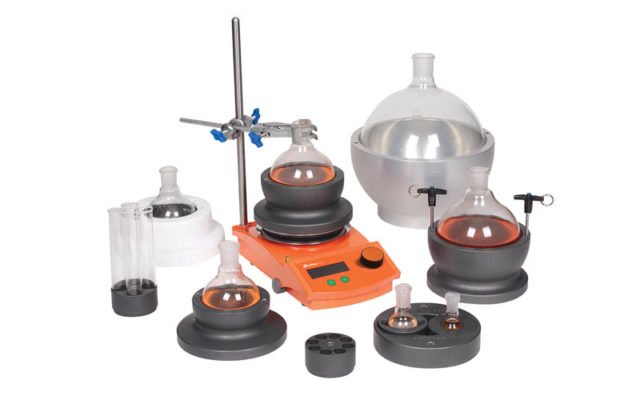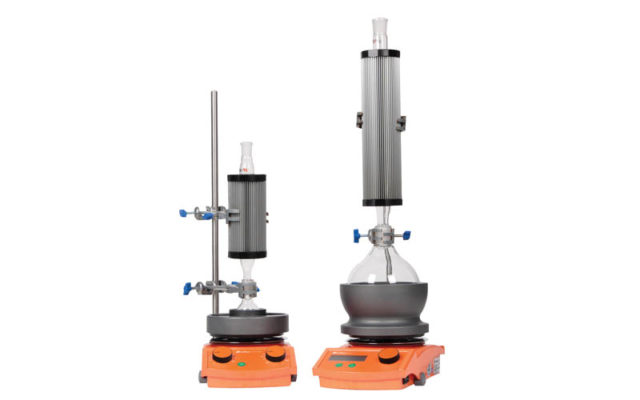Refluxing is the process of heating a reaction in a controlled manner, while continually cooling the vapour to make sure the solvent doesn’t boil off – this is typically achieved using a condenser. While an incredibly common and useful principle, it can also bring it with some easily made mistakes.
Here are our top tips for running a reflux reaction when using a round bottom flask, including some common errors to avoid.
Mistake: picking the wrong condenser
First and foremost, it’s important to select the right equipment for the job. Your condenser must be suitable for the volume of your solution, as well as suitable for its boiling point. You’ll want to consider the size and design of it, as well as whether you want to use an air or a water condenser – if you opt for the latter, make sure you’re near a suitable water source.

Mistake: not using an appropriate heat source
Similarly, you’ll need the right heat source, as it can make a world of difference to a reflux reaction. Oil baths and heating mantles can certainly get the job done, but they come with big flaws. An oil bath runs a risk of burn injuries, and can often result in messy spills. Heating mantles often don’t fit the flask properly, which can cause the mantle to overheat and burn out.
Heat-On blocks are much safer overall as they present a lower fire risk, and eliminate oil contamination.
Mistake: overfilling your flask
Overfilling comes with a whole host of issues. At best, the condenser could struggle to contain all the solvent. At worst, the solution could spill over upon boiling – so it’s important to avoid it! Be sure not to fill the flask more than halfway, so the liquid has enough room to boil.
Mistake: overheating the solvent
You should set the temperature of the heat source to only just above the solution’s boiling point. Ensure you do not control by the temperature of a probe in the solution.

Mistake: not connecting the components securely
Making sure your setup is tightly secured is incredibly important for refluxing. Clamping plays a big part in this; not only does the clamp support the weight of the condenser, it also reduces pressure on the flask, so it needs to be properly tightened before the reaction begins.
Similarly, all hoses/tubes should be secured to water condensers. If they aren’t secured, an increase in water pressure could cause these hoses to pop off, resulting in water leaks (and potentially damaged equipment/research). With the water condenser no longer functioning properly, it could also allow vapours to escape, which, if flammable, run the risk of coming into contact with the heat source and exploding.
Mistake: connecting the water up the wrong way
It might sound simple, but making sure things are connected so that the water flows the correct way is essential. The water needs to run through the bottom inlet and out through the top – this is imperative for the cooling process. It also this prevents air bubbles from forming at the top of the condenser.
Mistake: not stirring your solution
Your setup is correct and your reaction is running – so why are you still experiencing issues? One of the most common problems that occurs during refluxing is bumping (superheating), and this tends to happen when you don’t stir your solution.
When only the liquid at the bottom of the glassware is at boiling point, pressure can build rapidly – resulting in bumping. To avoid this, simply add a stirring bar to your flask. You could alternatively add boiling chips (anti-bumping granules) to your solution before heating to help it boil more gently.

Mistake: starting the timer too soon
The final mistake many make is beginning to time the reaction too soon. The solution should not only be boiling, but actively refluxing in the condenser when your timer starts, otherwise you may produce inaccurate data.
Conclusion
Running a reflux reaction doesn’t have to be hard. By avoiding these common mistakes, you can ensure you run a safe reactions that result in a good yield.
Many Radleys products have been designed specifically to help prevent such mistakes. The Findenser, for example, is an air-cooled condenser – which completely eliminates the risk of water leaks.
You might also be interested in…
